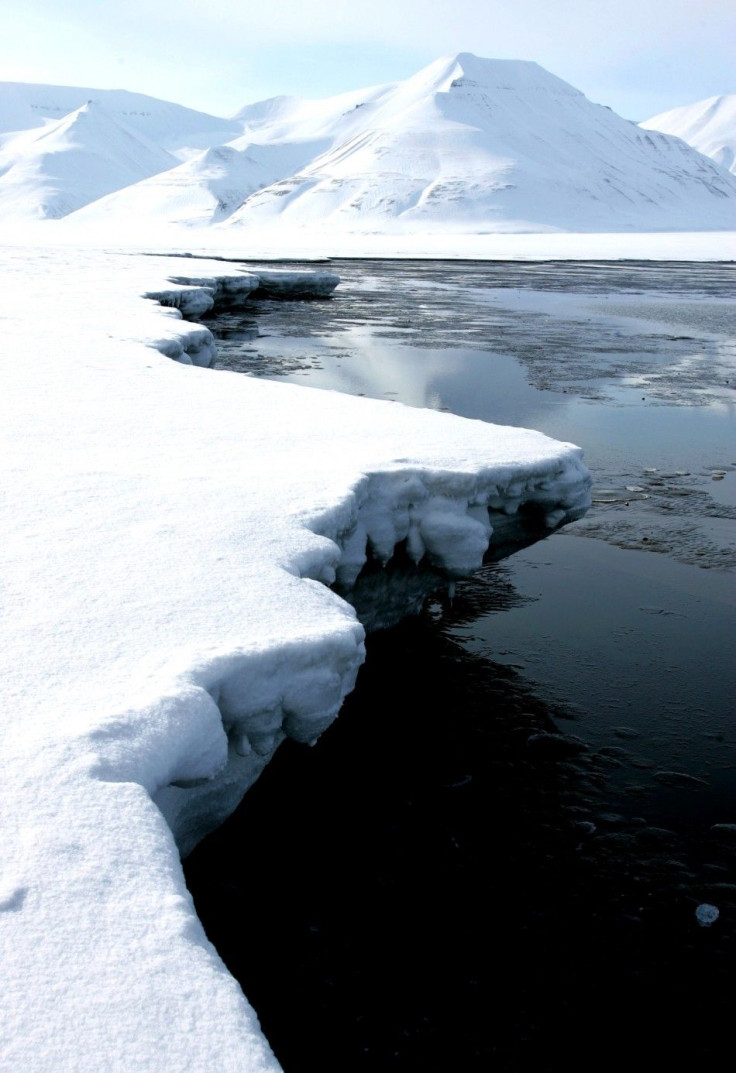Arctic 'Sleeping Giants' Waking Up, Starting To Release Methane: Report
KEY POINTS
- Scientists found evidence that the Arctic "sleeping giants" are starting to wake up
- Preliminary findings provide evidence of methane deposits being released
- The impact of the emissions is still unclear but it could be problematic for climate warming
A team of researchers found evidence that the "sleeping giants" of the Arctic Ocean may be starting to release methane. This could be problematic for an already warming planet.
Methane is a greenhouse gas that has a shorter lifespan than carbon dioxide but is much more potent at trapping radiation. As the U.S. Environmental Protection Agency (EPA) explained, "pound for pound," methane's impact is 25 times greater than that of carbon dioxide in a period of 100 years.
In the Siberian Arctic coastal regions, there are methane hydrates or crystals of methane gas molecules that are trapped between the solid water molecules. Called "sleeping giants," these methane hydrates could be a significant source of methane emission should they be released into the atmosphere.
Unfortunately, the findings of the researchers aboard the Russian Akademik Keldysh (RAK), shared in an exclusive report from The Guardian, show that the sleeping giants may be starting to wake up as high levels of methane have been detected in the Laptev Sea close to Russia.
As part of the International Siberian Shelf Study (ISSS-2020) expedition, the researchers monitored several areas on the Laptev Sea slope and found evidence that the methane is starting to be released.
They reportedly detected high methane levels being at depths of 350 meters. In one area at a depth of 300 meters, the researchers even found methane concentrations up to 1,600 nanomoles per liter, which is 400 times higher than expected, The Guardian said.
And although much of the "bubbles" were dissolving in the water, the researchers also noted high levels of methane on the surface.
Diverse samples/data secured. Two key findings: bubbles+methane released from slope (hydrates?) and shelf sunk-in craters. #scienceresearch #scienceoutreach #science #instaresearch #oceanography #climatechange #climate #greenhousegasses #explore #arctic #permafrost pic.twitter.com/Do99dylVDZ
— International Siberian Shelf Study Expedition 2020 (@ISSSarctic2020) October 22, 2020
"At this moment, there is unlikely to be any major impact on global warming, but the point is that this process has now been triggered," scientist Örjan Gustafsson of Stockholm University told The Guardian via a satellite call from the vessel. "This East Siberian slope methane hydrate system has been perturbed and the process will be ongoing."
Gustafsson noted the possible "awakening" of the sleeping giants in an earlier feature on the expedition from Stockholm University. He further explained that what and how the sleeping giants contribute to methane emissions is still "poorly understood."
As The Guardian explains, it's possible that the "instability" is likely caused by warmer waters from the Atlantic coming into the Arctic. What's more, the temperatures in the area have been unusually warm.
This is problematic because having major greenhouse gases released from natural sources could expedite the planet's warming process and further limit the amount of human-made greenhouse gases we can emit. It's something that's already quite the challenge even without the contributions from the major natural greenhouse gas sources.
Just this July, for instance, a major international study reported that methane emissions increased by 9% in the last decade, 60% of which were from man-made sources such as the burning of fossil fuels, agriculture, and waste management.
"Increased greenhouse gas emissions from permafrost and methane hydrates reduce the amount of greenhouse gases that can be allowed to be emitted from our society if we are to meet the climate targets that are set to avoid large-scale climate impacts," Birgit Wild, expedition workgroup leader and assistant professor at Stockholm University's Department of Environmental Science, said in the university feature.
To be clear, the researchers do note that their findings are still preliminary and would still be analyzed once they return. However, their findings provide evidence that the sleeping giants are awakening.
Although what this could mean for the future of climate change remains unclear, the researchers' work is adding clarity to some of the biggest uncertainties surrounding climate warming.

© Copyright IBTimes 2025. All rights reserved.






















